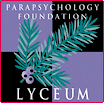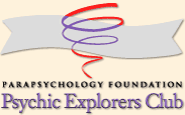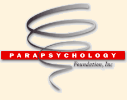 |
 |
| THE BIOGRAPHICAL DICTIONARY OF PARAPSYCHOLOGY LEONORE EVELINA SIMONDS PIPER (Mrs. William Piper), medium. B. June 27, 1859, Nashua, New Hampshire; d. July 3, 1950, New York, N. Y. M. 1881, William Piper (d. 1904): 2 d. Mrs. Piper was one of the most celebrated and most productive of the mediums investigated in recent times. Her most active period spanned three decades - from about 1885 to about 1915 - and in later years she continued intermittently to give sittings of interest to psychic researchers. She was unique in many ways. She came to mediumship reluctantly, yet submitted patiently to study after study. The facts she produced in trance about sitters and deceased persons known to them were so many and so convincing that rigid security measures were adopted with her; dectectives were assigned to follow her and members of her family; sitters went to her anonymously or under assumed names. Not only was no evidence of fraud, conscious or unconscious, ever produced; under these rigid conditions, anathema to most mediums, Mrs. Piper continued to operate effectively in trance, producing "communications" both orally and through automatic writing, and sometimes using both methods simultaneously. One after another, the most skeptical investigators concluded that she was receiving information by extrasensory means, although they disagreed then - and do now - as to whether this should be attributed to telepathy and clairvoyance or accepted as clear evidence of survival. Mrs. Piper discovered her mediumship in 1884, when she consulted a psychic healer for help in clearing up a tumor. On her second visit she herself fell into trance. She began to hold sittings at home with relatives and firends. In 1885 Williamm James (q.v.) visited her in order, as he said then, to explain by simple means to his convinced mother-in-law how Mrs. Piper produced her "marvelous facts." After several sessions, he noted: "If you wish to upset the law that all crows are black . . . it is enough if you prove that one crow is white. My white crow is Mrs. Piper." In 1887 James introduced Mrs. Piper to Richard Hodgson (q.v.), newly appointed secretary of the American Branch of the Society for Psychical Research, London. Hodgson was fresh from having exposed several fradulent mediums, among them Madame Blavatsky in India, in investigatios for the SPR. His first sittings with Mrs. Piper, which he undertook believing she was a fraud, surprised him by producing "much initimate knowledge of deceased friends and relatives of mine." He then made appointments for some fifty sitters who were unknown to Mrs. Piper, with similar results; he hired detectives to see if she had help for confederates. "Not the smallest indication whatever of any such prodecure was discovered," he reported. After allowing for information obtainable by coincidence, by remarkable guessing, or by clues given consciously or unconsciously by sitters, he concluded that "a large residuum of knowledge displayed in her trance state could not be accounted for except on the hypothesis of supernormal power." In the years following, experiments with Mrs. Piper were conducted by James, Hodgson and James Hyslop (q.v.), among others, in the United States; by Sir Oliver Lodge, Frederic Myers, J. E. Piddington, Walter Leaf, Mrs. Henry Sidgwick (qq.v.), and others in England. Lengthy reports on these experiments appear in the Proceedings and Journals of both the American and British societies from 1886 to 1915. Myers, Hodgson and to a degree William James accepted the survival hypothesis as a result of Mrs. Piper's work; other researchers inclined toward telepathy or clairvoyance as an explanation, or to these combined with a theory advanced by Mrs. Sidgwick that "intelligence in direct communication with the sitter is not, as it professes to be, an independent spirit using Mrs. Piper's organism, but some phase or element of Mrs. Piper's own consciousness." See "Modus Operandi of Trance Communications - Mrs. Piper," by Dorothy Berg (ASPR Journal, Vol. 45, No. 1, Jan. 1951); Some Modern Mediums (1930), by Theodore Besterman; The Psychic Source Book (1951), edited by Alson J. Smith; Psychics and Common Sense (1953), by William Oliver Stevens; The Sixth Sense (19500 by Rosalind Heywood. Taken from Helene Pleasants (1964) Biographical Dictionary of Parapsychology with Directory and Glossary 1946-1996 NY: Garrett Publications |
 |

|
 www. parapsychology. org |
||